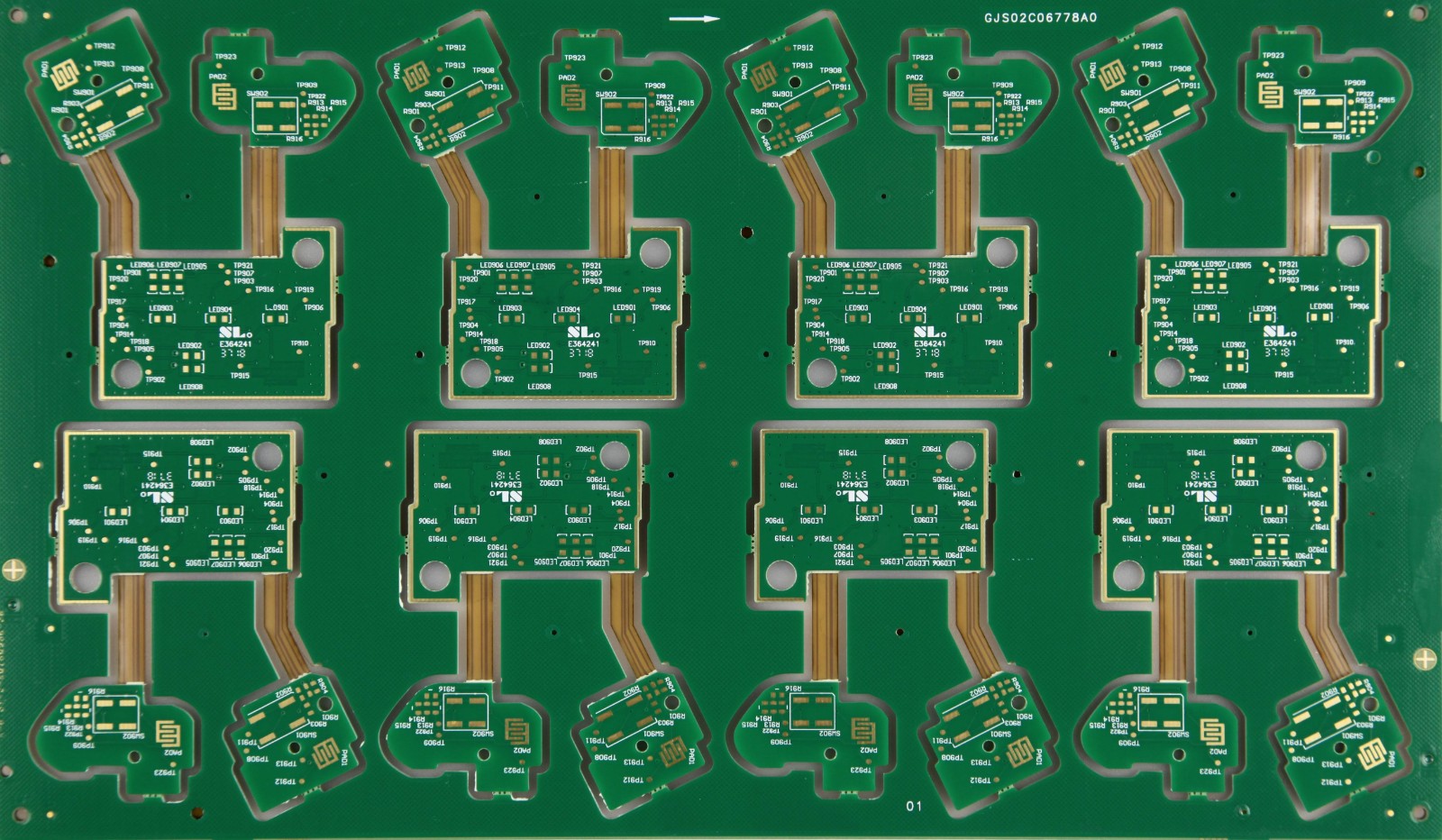Rigid-Flex PCBs: Why are Flex PCBs so expensive?
First, the raw materials used are very expensive, often made of polyimide. In comparison to flexible PCB substrates, the commonly used FR-4 boards are relatively cheap. Second, the manufacturing and assembly process is slightly more complex than that of regular PCBs. This complex design and fabrication process also results in lower manufacturing yields and longer manufacturing cycles, both of which can impact project timelines and budgets, further increasing the overall cost.
So, do you know which electronic devices rigid-flex boards are typically used in?
What are rigid flex PCBs?
A Rigid-Flex PCB is a both flexible circuit boards and rigid circuit boards hybrid circuit board combining elements of , with an end result of a board that is able to be folded or continuously flexed and is normally formed into a flexed shape or curve during the manufacturing process.
What is the Difference Between Standard PCBs and Rigid-Flex PCBs?
Understanding the differences between standard PCBs and Rigid-Flex PCBs will help you grasp why Rigid-Flex PCBs are often more expensive.
Rigid-Flex PCBs are a specialized type of circuit board that combines layers of flexible and rigid substrates, laminated together into a single component. This unique design allows the board to be bent and folded, extending the traditional planar design into a three-dimensional (3D) space, which offers significant advantages for product design. The special structure and complex manufacturing process of Rigid-Flex PCBs require more time to produce, which substantially increases the overall production costs. Additionally, Rigid-Flex PCBs are made from high-performance materials like polyimide, known for its excellent thermal stability. These materials can withstand high temperatures and have superior resistance to radiation, harmful oils, chemicals, and extreme industrial conditions. The use of such specialized materials further drives up manufacturing costs.
In contrast, standard PCBs are typically made from more affordable materials like paper-based or glass fabric-based substrates, which are impregnated with phenolic or epoxy resins and laminated with copper foil. These are rigid boards, not easily bendable, but they provide the necessary strength to support the electronic components attached to them. The manufacturing process for standard PCBs is simpler, leading to lower material and labor costs, making them more affordable. As a result, standard PCBs are commonly used in simpler consumer electronics.

Applications of Rigid-Flex PCBs
Rigid-Flex PCBs are commonly used in applications where the advantages of their unique design can be fully utilized. For example, in foldable smartphones, Rigid-Flex PCBs are often found at the hinge, camera modules, keyboards, and RF modules. In consumer products like digital cameras (DSC) and digital video recorders (DV), Rigid-Flex PCBs are essential for both performance and structural requirements. These boards allow for three-dimensional connections between different rigid PCBs and components, thus increasing the total usable PCB area and enhancing circuit capacity. This also helps reduce signal transmission limitations and assembly errors. The lightweight and flexible nature of Rigid-Flex PCBs contributes significantly to reducing the size and weight of devices.
In industrial applications, Rigid-Flex PCBs are used in products that demand high precision, reliability, and durability, such as in military, medical, and industrial equipment. These environments require PCBs with high reliability, accuracy, low impedance loss, and robust signal transmission quality. However, the highly complex manufacturing process of Rigid-Flex PCBs, combined with low production volumes, results in higher unit costs. This complex design and fabrication process also leads to lower manufacturing yields and longer production cycles, both of which can impact project timelines and budgets.
If your product requires Rigid-Flex PCBs, our company, Rocket PCB, can provide high-quality, customizable Rigid-Flex circuit boards to meet your needs.
How do I design a Rigid-Flex PCB?
When switching to Rigid-Flex PCB design, there are several factors you need to consider—some are familiar, while others may be new to you. These include:
Layer Consideration: Rigid-Flex PCBs are made by alternating layers of flexible and rigid PCB materials. Before making the switch, determine how many layers your intended application will require. Then, consult your original equipment manufacturer (OEM) to ensure it can meet these requirements.
Thermal Management: Heat dissipation occurs when current flows through electronic devices. The amount of heat released depends on factors like device characteristics, power, and PCB design. Excessive heat can affect device performance and cause damage. Therefore, the PCB in your device should facilitate heat dissipation, which can be achieved by adhering to Rigid-Flex PCB design guidelines.
Material Stack-Up: For Rigid-Flex boards, the material stack-up is a crucial factor. Achieving the optimal stack-up requires close collaboration with your manufacturer on the following aspects:
UL flammability rating
Suitable materials
Minimum required bend radius
RoHS compliance
Impedance control
Mechanical considerations
Lead-free assembly compatibility
The material stack-up significantly impacts cost, performance, and manufacturability. Invest sufficient time and resources in finding the best configuration. After developing the appropriate model, let the designer perform the necessary calculations, followed by manufacturer validation.
You may use boards with different layers; for example, one might have 20 layers, while another has 12. However, it is essential that they have similar stack-ups, similar thicknesses, and comply with Rigid-Flex PCB design rules. This will help reduce manufacturing issues that could derail your project.
What are the Benefits of Rigid-Flex PCBs in Hi-Tech Circuits?
The greatest benefit of Rigid-Flex PCBs is their applicability in high-density device groups, thanks to their flexibility, stability, and low space usage.
What are the Disadvantages of Rigid-Flex PCBs?
Rigid-Flex PCBs are more susceptible to environmental factors such as moisture, chemicals, and heat. The flexible materials used may not provide the same level of protection as rigid PCBs, making them less suitable for harsh operating conditions.
Common Causes of Open Circuits in Rigid-Flex PCBs
Rigid-Flex PCBs are an innovative design that combines rigid and flexible boards, but they can encounter issues like open circuits due to:
Material Damage or Breakage: The flexible materials used in Rigid-Flex PCBs are prone to bending and flexing. Long-term use or improper handling can cause the flexible parts to break, leading to open circuits.
Poor Soldering: The manufacturing of Rigid-Flex PCBs requires precise soldering. Poor soldering or low-quality solder joints can result in loose connections or detached joints, causing open circuits.
Excessive Bending or Stretching: Over-bending or stretching during use can cause the connection lines or wires in the flexible part to break, leading to open circuits.





